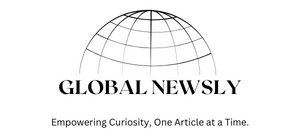
Achieving a healthy work-life balance is essential for your overall well-being and productivity. It can be challenging to find the right equilibrium between our professional and personal lives.
That’s why this blog will provide you with valuable tips and strategies that can help you achieve and maintain work-life balance effectively. Additionally, we will explore the relationship between work-life balance and mental health, highlighting how finding this balance can contribute to improved mental well-being.
Work-life Balance Definition
The equilibrium between one’s personal and professional obligations is referred to as work-life balance. It entails using time, energy, and attention wisely so that neither one takes precedence over the other. Achieving work-life balance is important for maintaining overall well-being and productivity.
But what is Work-Life Balance and why is it important?
Work-life balance encompasses the ability to prioritize and allocate time and energy to various aspects of life, including work, family, social activities, hobbies, and personal well-being. It involves finding a harmonious integration between these different domains rather than striving for perfection or equal division of time.
Work-life balance recognizes that individuals have diverse responsibilities and aspirations outside of their careers. It emphasizes the importance of dedicating time to personal growth, relationships, self-care, and leisure activities. No work-life balance will lead to increased stress levels, worsened mental health, decreased job satisfaction, and diminished overall quality of life.
It’s important to note that work-life balance should not be confused with work-life harmony. While work-life balance focuses on finding an equilibrium between work and personal life domains, work-life harmony emphasizes blending these aspects seamlessly.

Work-life harmony acknowledges that there may be times when work demands more attention or when personal matters require additional focus. The goal is to find a flexible approach where both areas can coexist without causing excessive stress or neglecting important priorities.
Understanding the concept of work-life balance is vital as it sets the foundation for implementing strategies that promote a healthier integration of professional and personal spheres.
How to Maintain Work-life Balance?
Maintaining a healthy work-life balance allows you to effectively manage your professional commitments while also nurturing your personal life.
What are the Benefits of Work-Life Balance?
- Enhanced well-being and mental health – When individuals have a proper work-life balance, they experience reduced stress levels and improved mental health. They have the time and energy to engage in activities that promote relaxation, self-care, and personal growth. This leads to increased happiness, satisfaction, and overall well-being.
- Increased productivity – Maintaining a healthy work-life balance increases productivity. When individuals have time for rest, leisure activities, and quality time with loved ones, they return to work feeling refreshed and motivated. This renewed energy translates into higher levels of focus, creativity, and efficiency in their professional careers.
- Job satisfaction – A good work-life balance contributes to greater job satisfaction. When individuals can allocate time for both work-related responsibilities and personal interests or commitments, they feel a sense of fulfillment in multiple areas of their lives. This satisfaction not only improves their overall quality of life but also enhances their commitment to their careers.
When you start prioritizing work-life balance, you will start to experience these benefits that positively influence various aspects of your life. Employers must recognize the significance of work-life balance as it leads to happier, healthier employees who are more engaged and productive in the workplace.
Strategies for Achieving Work-Life Balance
Finding the right balance between work and personal life requires conscious effort and the implementation of effective strategies. Here are two key approaches to help you achieve work-life balance:
Setting Boundaries and Prioritizing
The first approach is setting boundaries and prioritizing your tasks. Keeping a good balance in business and personal life requires well defined limits. Establish clear working hours at the outset and try your best to adhere to them. Communicate these boundaries with your colleagues, supervisors, and clients to manage expectations effectively.
Identifying priorities is another essential aspect of achieving work-life balance. Take time to assess your responsibilities and determine what truly matters most to you. When you understand these priorities, you can allocate time and energy accordingly, ensuring that important tasks are completed while still making room for personal activities.
Managing time effectively is also important in this process. Utilize tools such as calendars or productivity apps to schedule tasks, set reminders, and allocate dedicated time slots for both work-related and personal activities. This helps prevent overlapping commitments and allows for better organization.

Practicing Self-Care and Mindfulness
The next approach is practicing self-care and mindfulness. Taking care of yourself is fundamental to achieving work-life balance. Make self-care a priority by incorporating activities that promote relaxation, rejuvenation, and overall well-being into your routine. This can include exercise, hobbies, spending quality time with loved ones, or engaging in activities that bring you joy.
Practicing mindfulness is another powerful strategy for managing stress levels and improving focus. Set aside moments throughout the day to engage in mindfulness exercises such as deep breathing or meditation. These practices help reduce anxiety, increase self-awareness, and enhance mental clarity.
Keep in mind that attaining work-life balance necessitates continuous assessment and modification. Be flexible in adapting your strategies as needed to maintain equilibrium between your professional obligations and personal fulfillment. With commitment and persistence, you can create a harmonious integration of work and life that promotes overall well-being.
The Role of Employers in Promoting Work-Life Balance
Employers are the ones that should faster a healthy work environment that supports and encourages work-life balance among their employees. That’s why it’s super important for them to implement certain practices and provide resources to ensure a good work-life balance.
Creating a Supportive Work Environment
One way employers can promote work-life balance is by offering flexible work arrangements and remote work options. This allows employees to have more control over their schedules, enabling them to better manage personal commitments while meeting professional responsibilities.
Flexible work arrangements will show employees that their employers trust in their employees’ ability to deliver results regardless of their physical location or specific working hours.
Another way to encourage a supportive work environment is to have open communication. Employers should foster a culture where employees feel comfortable discussing their work-life needs and concerns. This can be achieved through regular team meetings, check-ins, or one-on-one conversations.
This way, employers will demonstrate their commitment to promoting work-life balance by actively listening to employee feedback and resolving any issues or conflicts that may arise.
Providing Employee Benefits and Resources
Employers can further support work-life balance by offering wellness programs and employee assistance programs. Wellness initiatives may include fitness classes, mental health resources, stress management workshops, or access to counseling services. These benefits help employees prioritize self-care and overall well-being.
Promoting work-life balance through policies and initiatives is also important. Employers can establish guidelines that encourage reasonable working hours, discourage excessive overtime, and provide opportunities for time off or sabbaticals. Additionally, they can implement policies that address workload distribution and ensure fair allocation of tasks among team members.
Work-Life Balance Statistics and Facts
We need to understand the current landscape of work-life balance to grasp the challenges individuals face and the benefits that can be gained. Here are some statistics and facts that will help us understand and see how important this topic is:
Understanding the Current Landscape
- According to a survey conducted by the American Psychological Association, 66% of working adults in the United States report experiencing work-related stress, with 35% stating that their jobs interfere with their personal lives.

- A study published in the National Library of Medicine found that employees who experience poor work-life balance are more likely to suffer from symptoms of depression and anxiety.
- Research conducted by Gallup indicates that employees who have high levels of work-life balance are 21% more likely to feel engaged in their jobs.
- Burnout is recognized by The World Health Organization as an occupational syndrome that arises from ongoing stress at work. This highlights the importance of addressing work-life balance to prevent burnout.
Facts about the Benefits of Work-Life Balance
- Individuals who maintain a healthy work-life balance experience improved physical health, reduced risk of chronic diseases, and better overall well-being.
- Work-life balance contributes to increased job satisfaction and higher levels of productivity among employees.
- Organizations that prioritize work-life balance see lower turnover rates, higher employee retention, and increased loyalty from their workforce.
- Employees with good work-life balance are more likely to have positive relationships with colleagues, leading to better teamwork and collaboration.
These statistics and facts emphasize the significance of achieving a healthy work-life balance for both individuals and organizations. When people start to understand these trends, our employers will be able to implement strategies and policies that support their employees’ well-being while fostering a productive and harmonious work environment.
Emphasizing the Importance of Work-Life Balance
Prioritizing work-life balance not only benefits employees by reducing stress levels, improving mental health, and enhancing their job satisfaction but also has positive outcomes for employers.
Companies that prioritize work-life balance experience higher employee engagement, increased productivity, and improved retention rates. Individuals and organizations alike need to recognize the importance of work-life balance in order to thrive in both personal and professional spheres.




I can’t keep up with work and life at the same time, no matter what i try. ill try to follow some tips you mentioned tho
Its been hard to manage life with 2 kids, but I get your point. Its really important to work on this.
Great tips!
Comments are closed.